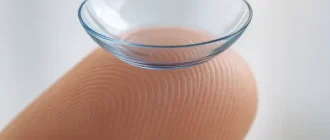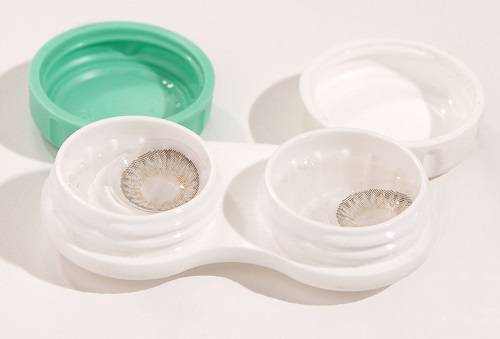When it comes to vision correction, contact lenses have come a long way. It’s no longer about simply replacing eyeglasses; contact lenses can do much more—especially for those dealing with complex conditions like keratoconus, astigmatism, and dry eyes. Let’s explore the types of contact lenses that cater to specific eye conditions, delve into their benefits, limitations, and costs, and help you understand the best options available today.
Some hesitate, some procrastinate,
But contacts bring a view so great.
No frames to fog, no heavy weight,
Just clearer sights that won’t be late.
Keratoconus: A Closer Look at Lenses for a Complex Condition
Keratoconus is a progressive eye disorder characterized by the thinning and bulging of the cornea into a cone-like shape. This condition significantly distorts vision and requires specialized contact lenses to improve sight.
Statistics You Should Know: According to the National Eye Institute, 1 in 2,000 people is affected by keratoconus, often starting in adolescence. More recent studies suggest it may be underdiagnosed, with some estimates reaching 1 in 500 due to advancements in diagnostic technology.
Contact Lens Options for Keratoconus
| Lens Type | Cost Range (USD) | Benefits | Challenges |
|---|---|---|---|
| Rigid Gas Permeable | $500 – $1,500 | Clear vision, durable | Initial discomfort |
| Scleral Lenses | $1,000 – $4,000 | Stability, good moisture retention | Costly, requires adaptation |
| Hybrid Lenses | $800 – $2,000 | Comfort of soft lenses, clarity of RGP | Difficult to fit |
Rigid Gas Permeable (RGP) Lenses: These are often the first choice for keratoconus patients. Made of a firm, oxygen-permeable material, RGP lenses maintain their shape, providing clearer vision by compensating for the irregular corneal surface. However, they do require a period of adaptation, which can deter some users.
Scleral Lenses: These larger lenses rest on the sclera (the white part of the eye), creating a vault over the cornea. This makes them perfect for severe keratoconus, as they help retain moisture, making them suitable for those who also have dry eyes. Despite their benefits, their high cost and the need for specialized fitting are considerable barriers.
Hybrid Lenses: Combining the benefits of both RGP and soft lenses, hybrid lenses offer comfort while still correcting the irregularities of keratoconus. They’re not as commonly prescribed due to the difficulty of fitting, but they can be a great middle-ground option for some patients.
Astigmatism: Toric Lenses and the Need for Precision
Astigmatism occurs when the cornea or lens is irregularly shaped, causing blurred or distorted vision. Approximately 1 in 3 people has astigmatism to some degree, making it a common condition requiring correction.
Toric Lenses for Astigmatism: Toric lenses are designed specifically to accommodate the irregular curvature of the eye that characterizes astigmatism. Unlike standard spherical lenses, toric lenses have different optical powers in different meridians, which allows them to correct astigmatism effectively. These lenses range from $50 to $150 per box, depending on whether they are daily, bi-weekly, or monthly disposables.
Soft vs. Rigid Lenses: While soft toric lenses are popular for their comfort, rigid lenses can sometimes provide sharper vision for those with more severe astigmatism. Dr. Karen Stevens, an optometrist with 15 years of experience, notes, “Many people start with soft lenses for convenience, but those with high astigmatism often find they get better visual acuity with rigid lenses.”
Dry Eyes: Can Contact Lenses Work?
Dry eyes and contact lenses have long been a tricky combination. For those with dry eyes, wearing contacts can exacerbate symptoms like itching, redness, and discomfort. However, new innovations are making contact lenses a more viable option for dry eye sufferers.
Lens Innovations for Dry Eyes
Silicone Hydrogel Lenses: These lenses are made from a material that allows more oxygen to pass through to the cornea, reducing dryness. They are available for around $60 to $120 per box and are often recommended for those who want to wear contacts despite mild dry eye symptoms.
Moisture-Retaining Lenses: Brands like Acuvue Oasys or Bausch + Lomb Ultra have incorporated moisture-retaining agents that help alleviate dry eye symptoms. These lenses can cost $100 to $150 per box and are available in both toric and spherical versions.
Scleral Lenses for Severe Dry Eyes: As mentioned earlier, scleral lenses can be a game-changer for those with severe dry eyes. By creating a fluid reservoir between the lens and the cornea, they help maintain hydration throughout the day, offering significant relief from dry eye symptoms.
Other Eye Conditions: Presbyopia, Corneal Scarring, and Beyond
Presbyopia: As people age, the eye’s natural lens loses elasticity, making it difficult to focus on close objects. Multifocal contact lenses offer a solution here, and can cost $80 to $200 per box. These lenses allow wearers to see both near and far without the need for reading glasses, though they can take some time to adjust to.
Corneal Scarring: For those with corneal scarring, RGP or scleral lenses are often prescribed. The rigid structure of these lenses can provide clear vision by effectively masking the cornea’s irregularities. The cost of such lenses varies widely, ranging from $500 to $4,000, depending on the severity and type of scarring.
Expert Opinions: Do Contact Lenses Meet Every Need?
While contact lenses have evolved to address a wide range of conditions, they are not a one-size-fits-all solution. Dr. Robert Nguyen, an ophthalmologist specializing in corneal diseases, points out, “For many patients, contact lenses are a life-changing solution, but they do require proper fitting and regular follow-up. Conditions like keratoconus or severe dry eye need careful management to avoid complications.”
There’s also the question of lifestyle. Smoking and alcohol use can significantly worsen eye conditions, reducing the effectiveness of contact lenses and increasing the risk of complications like infections. Dr. Nguyen emphasizes that quitting smoking and minimizing alcohol consumption are key steps for anyone considering contact lenses for medical conditions.
Editorial Advice: Finding Comfort and Clarity
Choosing the right contact lens isn’t just about correcting your vision—it’s about finding a solution that works for your lifestyle, comfort, and overall eye health. Start by consulting with an eye care professional to understand your specific needs. If you have keratoconus, dry eyes, or astigmatism, explore the different lens types and be prepared for a period of adjustment. Keep in mind that quitting smoking and other unhealthy habits can significantly improve your success with contact lenses.
There are many options, but what’s most important is finding the right fit for you. Your eyes are unique, and the solution should be too.





